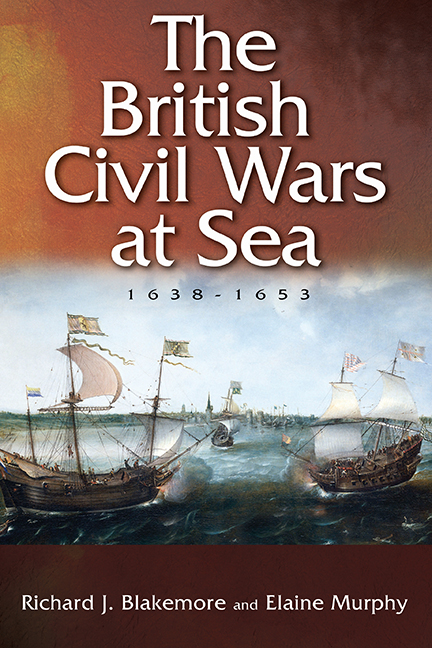Book contents
- Frontmatter
- Dedication
- Contents
- List of Illustrations
- Preface and Acknowledgements
- List of Abbreviations
- Map
- Introduction
- 1 Warfare at Sea in the Early Modern Period
- 2 The Outbreak of War, 1638–1642
- 3 The War at Sea, 1642–1646
- 4 Parliament's Navy, 1642–1646
- 5 Royalist, Confederate, and Scottish Naval Efforts, 1642–1653
- 6 Revolution, 1647–1649
- 7 Conquest, 1649–1653
- Conclusion
- Appendix 1 Timeline of the Civil Wars at Sea, 1638–1653
- Appendix 2 Parliamentarian Fleets, 1642–1649
- Bibliography
- General Index
- Index of Ships
Appendix 2 - Parliamentarian Fleets, 1642–1649
Published online by Cambridge University Press: 19 July 2019
- Frontmatter
- Dedication
- Contents
- List of Illustrations
- Preface and Acknowledgements
- List of Abbreviations
- Map
- Introduction
- 1 Warfare at Sea in the Early Modern Period
- 2 The Outbreak of War, 1638–1642
- 3 The War at Sea, 1642–1646
- 4 Parliament's Navy, 1642–1646
- 5 Royalist, Confederate, and Scottish Naval Efforts, 1642–1653
- 6 Revolution, 1647–1649
- 7 Conquest, 1649–1653
- Conclusion
- Appendix 1 Timeline of the Civil Wars at Sea, 1638–1653
- Appendix 2 Parliamentarian Fleets, 1642–1649
- Bibliography
- General Index
- Index of Ships
Summary
Exact figures for the size of parliament's naval fleets are problematic, because there are a number of surviving sources which record the ships set out by parliament, and these do not always agree. The purpose of this appendix, therefore, is to summarise these sources and indicate the likely (but not definite) numbers of ships set forth by parliament during the period up to 1649. Where auxiliaries are mentioned here, this is because they are included in these sources – as discussed in Chapter 4, parliament mobilised many more auxiliaries than are listed here.
Table 1 presents the minimum and maximum ranges indicated by the available sources for the summer guards, which were the largest concentration of ships. ‘Total’, in this table, is not the addition of the maximum or minimum for each category, but the range of totals indicated by the various sources. The printed lists (see Table 4, below) are also incorporated into this table, although they do not distinguish between summer and winter guards and therefore may, in some cases, represent the latter.
Table 2 presents the numbers recorded in two manuscripts held at the British Library. The first, Add. MS 17,503, is entitled ‘A list of such Shipps and Frigotts of the Navy Royall as Also of such Marchant Shipps as were sett forth in the service of the King & Parliament in the Yeares 1642: 1643: 1644: 1645: 1646: and 1647’. This document distinguishes between summer and winter guards, and besides merchant ships serving with the fleet it specifies colliers’ ships and fire ships in 1643, as well as merchant ships ‘taken upp … for the Irish Coast’ in 1645, and merchant ships that ‘Capt[ain] Lewis Dick set out for Scotland’ in 1647. It further notes eight pinnaces employed for eight months, in 1642, which are included here, and the ‘Hire and fraight of Ten Packet Boates and Ketches’ in 1644, which are excluded. Finally, it records, for the winter guard in 1643, 1645, and 1646, ‘divers of the Marchant ships’, manned with 1,808, 840, and 456 men respectively. For each of these years the average number of men per merchant ship in the summer guard has been calculated from the available figures, resulting in estimates of eighteen, thirteen, and six ships, respectively (rounding down) for the winter guards.
- Type
- Chapter
- Information
- The British Civil Wars at Sea, 1638–1653 , pp. 186 - 189Publisher: Boydell & BrewerPrint publication year: 2018

